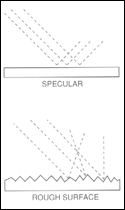
-
At last a black that virtually doesn't reflect any light. Will it ever become affordable for optics outside the defence/space sector?
If this material ever escapes into the wild it could improve the performance of our lenses and cameras.
-
Basically, every new photographer has had to ignore his brain and see things afresh:
"a black roof in the sun is brighter than a white roof in the shade"
so..
How will it improve optics or lenses?
If you think, it's pretty obvious. The insides of lenses, cameras, matteboxes and almost everything has been as black and as matte black as possible, ever since the first cameras. I have been making adapter box systems for cameras (ie teleprompt-related), spray-wetting their inner surfaces with pva glue and covering this afterwards with a black felt "flock" surface in an attempt to lessen the reflectivity when this surface is exposed to full sun. Whether cotton, soot, acrylic or other, the chosen surface would end up very "un-black* when used in the field.
Until now, the best way to avoid reflected light was to avoid viewing any surfaces receiving direct light - as in bellows:

This is an interesting new discovery!
-
Finally the right color for the back sides of a deck of cards, never to allow for accidental or intentional "markings". Might also be useful for solar-thermic collectors, if cheap enough.
(And of course also the right color for the front side of the Tarot card predicting the chances of England to win the next World Cup ;-) )
-
see also http://www.theguardian.com/fashion/shortcuts/2014/jul/14/vantablack-nanofabric-new-black
Vantablack is the new black. You haven't heard of it? It really is the new black, blacker than all previous blacks known to man, and the Guinness Book of Records. When you look at this new black, you see only a hole. If you were to wear a Little Vantablack Dress, people would see your hands poking out the ends of the sleeves, your legs below the hem, your neck and head – and the rest of you would appear two-dimensional. Total flatness is not the usual ambition of little black dresses, but this new material, which has been developed by British company Surrey NanoSystems, is intended for military and astronautical purposes, not sartorial ones.
from http://news.discovery.com/tech/worlds-darkest-material-looks-like-a-black-hole-140714.htm
You can’t see it; you can only see the objects around it.
super-black material reduces stray light and has a wide range of possible applications, including as a coating for the exterior of stealth craft and weaponry or as a coating for the interior of sensitive telescopes.
Howdy, Stranger!
It looks like you're new here. If you want to get involved, click one of these buttons!
Categories
- Topics List23,964
- Blog5,723
- General and News1,342
- Hacks and Patches1,151
- ↳ Top Settings33
- ↳ Beginners254
- ↳ Archives402
- ↳ Hacks News and Development56
- Cameras2,361
- ↳ Panasonic990
- ↳ Canon118
- ↳ Sony154
- ↳ Nikon96
- ↳ Pentax and Samsung70
- ↳ Olympus and Fujifilm99
- ↳ Compacts and Camcorders299
- ↳ Smartphones for video97
- ↳ Pro Video Cameras191
- ↳ BlackMagic and other raw cameras121
- Skill1,961
- ↳ Business and distribution66
- ↳ Preparation, scripts and legal38
- ↳ Art149
- ↳ Import, Convert, Exporting291
- ↳ Editors191
- ↳ Effects and stunts115
- ↳ Color grading197
- ↳ Sound and Music280
- ↳ Lighting96
- ↳ Software and storage tips267
- Gear5,414
- ↳ Filters, Adapters, Matte boxes344
- ↳ Lenses1,579
- ↳ Follow focus and gears93
- ↳ Sound498
- ↳ Lighting gear314
- ↳ Camera movement230
- ↳ Gimbals and copters302
- ↳ Rigs and related stuff272
- ↳ Power solutions83
- ↳ Monitors and viewfinders339
- ↳ Tripods and fluid heads139
- ↳ Storage286
- ↳ Computers and studio gear560
- ↳ VR and 3D248
- Showcase1,859
- Marketplace2,834
- Offtopic1,319





